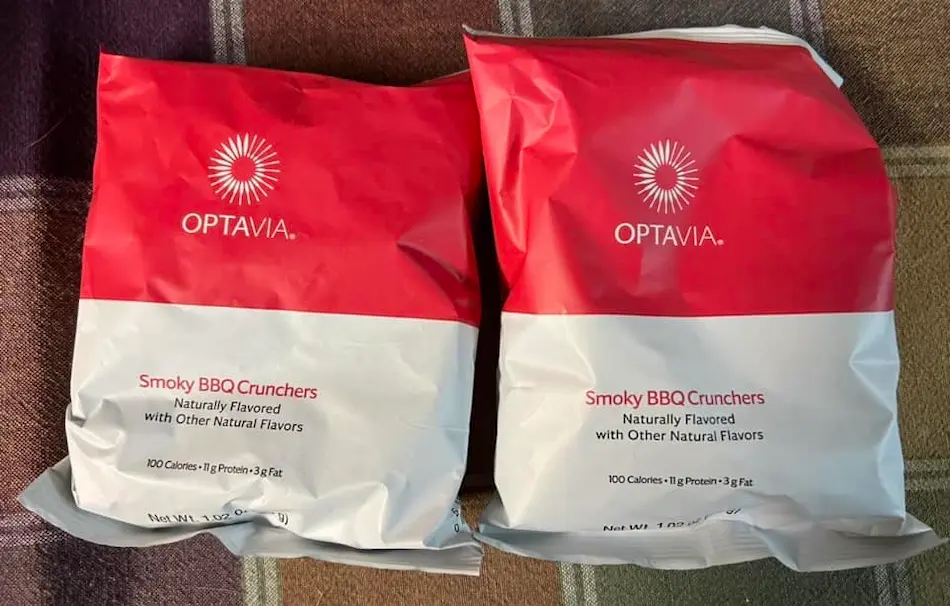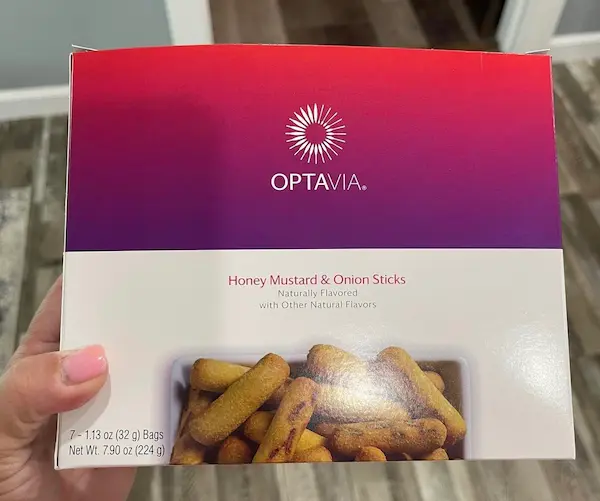Although most weight loss plans advise reducing overall calorie intake, many people don’t realize the importance of consuming enough dietary fiber in their diets.
According to The Dietary Guidelines for Americans, you should be eating between 22 to 34 grams of fiber per day, depending on your age and sex.
To answer your question, yes, the Optavia plan does have a lot of fiber as each of the fuelings has 4-5 grams, depending on the type.
Eating five fuelings and one meal per day should be enough to provide 50-60 grams of fiber.
Let’s explore what the source of fiber in the Optavia diet, and most importantly, how it can affect your results.

The fiber content in Optavia fuelings
It’s not a secret that fiber is an important part of any healthy diet as it keeps your digestive system in good shape.
As someone who has stomach issues, I know from experience that too little fiber can lead to constipation, bloating, and irregular bowel movements.
After following the Optimal Weight 5 and 1 plan for over a year, it’s fair to say that I was getting around 40-50 grams of fiber.
Half of this number comes from Optavia fuelings, and another half from lean and green meals.
Five fuelings contain 20-25 grams of fiber, whereas one lean and green meal has 20-30 grams, depending on what I eat.
Here’s the photo of the Optavia Honey Mustard & Onion Sticks box.

This fueling contains the most fiber of any essential fuelings – 5 grams per serving.
On the contrary, if you’re following the Optimal Health, which is the Optavia maintenance plan, some of the Health Fuelings, such as strawberry yogurt bars, have 8 grams of fiber per serving.
Sources of fiber in Optavia fuelings
When it comes to fiber, most of the Optavia fuelings contain soluble corn fiber, allulose syrup, and polydextrose, which aids in better digestive tolerance, according to the Optavia website.
Although Optavia has recently updated and reformulated its fueling ingredients, some of the products still contain inulin.
Let’s look at these fiber sources one by one.
Soluble corn fiber
Generally, soluble corn fiber is good for your body because it may help you go to the bathroom.
The Journal of Nutrition published an article that documented how these fibers affect going to the bathroom.
The researchers gave some people soluble corn fiber, and others a different food with less fiber.
They measured how much people went to the bathroom and how their stomachs felt.
“People ate foods with polydextrose and soluble corn fiber went to the bathroom more and had softer stools,” states the journal.
What’s more, the article also highlights that “a dose of 20 grams per day results in a mild laxative effect with nominal gastrointestinal tolerance issues.”
They also had more gas and stomach noises.
Polydextrose
You can think of polydextrose as a fake carbohydrate. It is used in food to make it bulkier, taste better, and have more texture.
According to the article review published in the Nutrients Journal, “polydextrose has the same effects on the body as other dietary fibers.”
It also has “prebiotic potential, which means it may help improve gut health,” states the article.
Although polydextrose is considered to be safe in moderate quantities, using it in larger amounts may lead to gastrointestinal distress in some people, such as diarrhea.
Inulin
The BMJ Journal states that”Inulin is a type of dietary fiber that our bodies cannot digest and absorb.”
Inulin was approved by the FDA (Food and Drug Administration) as a safe substance in 2003, and it has a slightly sweet taste.
In the intestine, “inulin can be used as a medium for probiotics to improve the structure of intestinal flora,” states the journal.
Although inulin can be taken daily in doses of 8-18 grams, side effects such as gas, bloating, diarrhea, constipation, and cramps are more likely to occur with larger quantities of the supplement, according to a WebMD article.
The only Optavia fueling that still contains inulin is Caramel Delight Crisp Bar.
The fiber in Optavia fuelings vs other products
To be honest, most of the protein shakes, bars, and other meal replacement products use the same (or similar) fiber sources as Optavia fuelings.
For example, Most Pure Protein shakes and Atkins protein shakes contain cellulose gel and cellulose gum.
Although there are many differences between Quest bars and Optavia bars, both of these companies use polydextrose as their main fiber source.
What’s more, two of Optavia’s main competitors, Nutrisystem and Slimfast, also use inulin and soluble corn fiber in all of their products.
How does fiber affect weight loss on Optavia?
Okay, so now we understand that fiber is an important nutrient.
But how does fiber intake affect weight loss on the Optavia program?
I’m not gonna lie – the biggest benefits of adding more fiber to my Optavia diet plan were fullness and satiety.
According to the article published in The Journal of Nutrition:
“Eating foods high in fiber can have a profound effect on weight loss goals by promoting feelings of fullness and satiety while helping to regulate blood sugar levels and prevent overindulgence.”
Eating small meals with a total of 1,000 caloires is not fun.
So apart from eating five fuelings, I had to ensure that my Lean and Green meal was always packed with high-fiber foods like veggies and selected starches.
The journal states:
“Dietary fiber intake, independently of macronutrient and caloric intake, promotes weight loss and dietary adherence in adults with overweight or obesity consuming a calorie-restricted diet.”
How does fiber affect digestion on Optavia?
Fiber is good for your digestion because it helps food move through your stomach and intestines.
For me, the biggest problem with the diet is constipation.
Normally, I would go to the restroom 2-3 times per day without any problems.
With Optavia was different.
When I eat fewer calories (and fewer whole foods) my body started to feel bloated and my stomach felt hard like a rock.
While I love to see results, I must admit I did struggle with my bowel movements.
I find that adding high-fiber foods helps to relieve constipation and promote regular bowel movements.
It makes me feel empty, so to speak.
Plus, many fiber supplements contain prebiotics, which can help to promote the growth of beneficial bacteria in the gut, improving overall health and well-being.
According to the article published in the Current Developments in Nutrition Journal, “prebiotic dietary fibers help provide food for the good bacteria in our digestive system.”
The bottom line
According to the CDC guidelines, you should be consuming 22-34 grams of dietary fiber per day.
The Optavia diet delivers 20-25 grams of fiber from fuelings, and 20-30 grams from lean and green meals, which meet these requirements.
Although dietary fiber is important, some fiber supplements may have side effects or interact with some medications.
It is important to ask a doctor before starting the Optavia diet or taking any fiber supplements.
